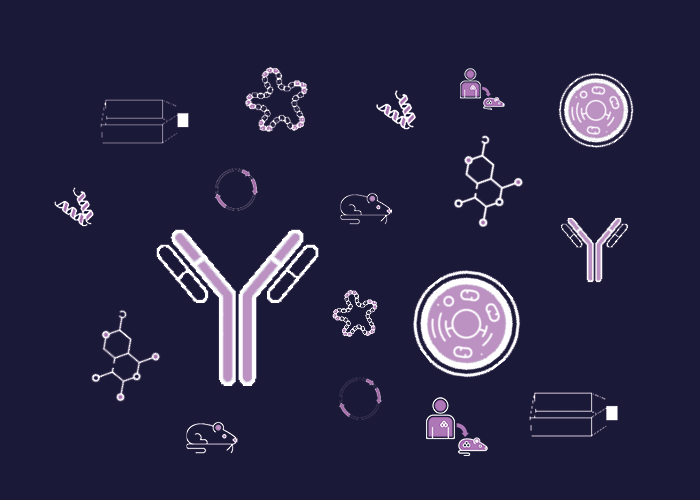
Cat. #151054
Anti-BCRABL [4C12]
Cat. #: 151054
Sub-type: Primary antibody
Unit size: 100 ug
Availability: 3-4 weeks
Target: BCRABL
Class: Monoclonal
Application: IHC ; IF ; RIA
Reactivity: Human
Host: Mouse
£300.00
This fee is applicable only for non-profit organisations. If you are a for-profit organisation or a researcher working on commercially-sponsored academic research, you will need to contact our licensing team for a commercial use license.
Contributor
Institute: Queen Mary University of London
Tool Details
*FOR RESEARCH USE ONLY (for other uses, please contact the licensing team)
- Name: Anti-BCRABL [4C12]
- Alternate name: Cyclin A2; Cyclin-A; CCN1; CCNA2
- Cancer: Blood cancer
- Cancers detailed: Leukemia
- Research fields: Cancer;Cell signaling and signal transduction;Genetics
- Clone: 4C12
- Tool sub type: Primary antibody
- Class: Monoclonal
- Conjugation: Unconjugated
- Strain: Balb/c
- Reactivity: Human
- Host: Mouse
- Application: IHC ; IF ; RIA
- Description: The BCR gene is involved in the 9:22 translocation that generates the Philadelphia chromosome both in chronic myeloid leukemia (CML) and in a proportion of cases of acute lymphocytic leukemia (ALL). A 5' bcr sequence becomes fused to an abl sequence (including tyrosine kinase domain sequences) from chromosome 9 and results in the production of a chimaeric BCR-ABL protein with enhanced kinase activity. These antibodies may be useful for studies of the oncogene and have potential diagnostic and prognostic applications.
- Immunogen: BCR-ABL peptide
- Isotype: IgG1
- Myeloma used: P3X63Ag8.653
Target Details
- Target: BCRABL
- Target background: The BCR gene is involved in the 9:22 translocation that generates the Philadelphia chromosome both in chronic myeloid leukemia (CML) and in a proportion of cases of acute lymphocytic leukemia (ALL). A 5' bcr sequence becomes fused to an abl sequence (including tyrosine kinase domain sequences) from chromosome 9 and results in the production of a chimaeric BCR-ABL protein with enhanced kinase activity. These antibodies may be useful for studies of the oncogene and have potential diagnostic and prognostic applications.
Applications
- Application: IHC ; IF ; RIA
Handling
- Format: Liquid
- Concentration: 0.9-1.1 mg/ml
- Unit size: 100 ug
- Storage buffer: PBS with 0.02% azide
- Storage conditions: -15° C to -25° C
- Shipping conditions: Dry ice
References
- Dhut et al. 1990. Leukemia. 4(11):745-50. PMID: 2232885.
- BCR-ABL and BCR proteins: biochemical characterization and localization.
- Dhut et al. 1988. Oncogene. 3(5):561-6. PMID: 3078961.
- Identification of two normal bcr gene products in the cytoplasm.
- Walker et al. 1987. Nature. 329(6142):851-3. PMID: 3478595.
- Novel chimaeric protein expressed in Philadelphia positive acute lymphoblastic leukaemia.


